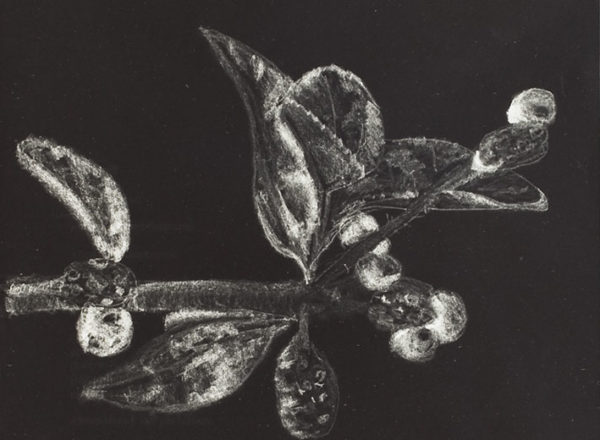


Two framed gelatin-silver prints, 53 x 44.5 cm
Work acquired in 2017
Born in 1967 in Eastrington (United Kingdom), Chris Evans lives and works in London.
He is represented by the Juliette Jongma gallery (Amsterdam).
Chris Evans works in a collaborative fashion, driving “projects” rather than works in the classical sense of the term. These productions are the fruit of discussions and exchanges with different speakers, entrepreneurs, politicians and other artists, whereby Chris Evans can be said to assume the role of consultant or advisor. Supported by theoretical texts, preoccupied with social and sociological questions, his approach provokes a shift in the role of the artist in today’s society. His works, which also include a strong narrative dimension, echo the works of artists like Liam Gillick and Ben Kinmont.
Begun in 2012, the series CLODS, Diplomatic Letters featuring Ambrosia artemisiifolia, commissioned drawing by Arunas Gelunas, Ambassador for Lithuania at UNESCO, inverted and Lantana Camara, commissioned drawing by Angelo Tromp, Diplomatic Attaché for Aruba in the Netherlands, inverted is a set of prints printed using silver bromide. They were originally created as a counterpoint to CLODS I, II and CLODS III, which are also part of the Lab’Bel Collection.
In the context of this proposal, Evans wrote to diplomats asking them to draw an invasive plant species of their choice. He then photographed their drawing by inverting the colour scheme, so that they appear white on a black background in the various prints. Following this process, the origin of the work—the drawing—appears in the form of a sketch with light delicate lines. The first of the two prints is accompanied by the title of the plant, the diplomat’s signature and the date of the drawing, although these inscriptions are difficult to decipher due to the highly reflective dimension of the photograph. In the second, the author does not add any annotations.
The relationship that these works may have with the sculptural installations known as CLODS is not specified and left up to the interpretation of the viewer. The prints hanging on the walls offer a marked contrast with the elements placed on the ground, the seductive and shiny quality of the photographs find a counterpart of sorts in the meticulous finish of the sculptures, executed in a raw material: concrete with a marble aggregate.